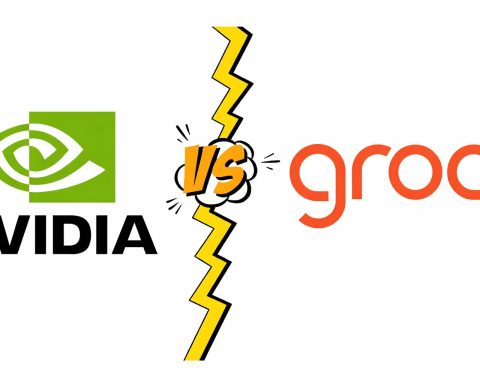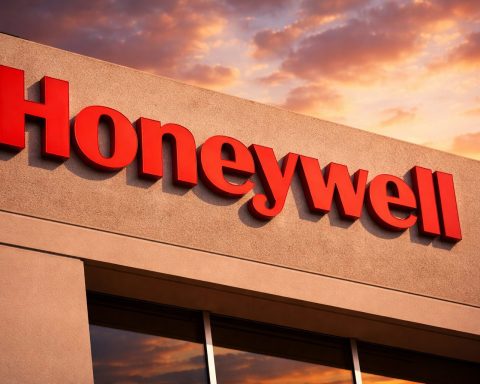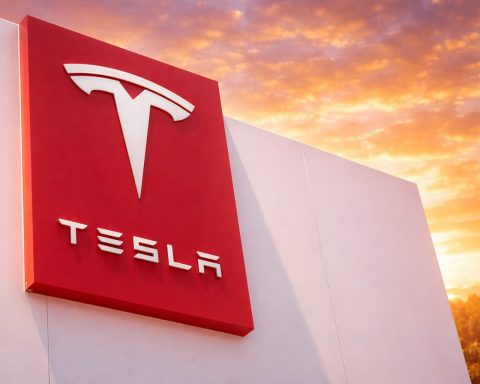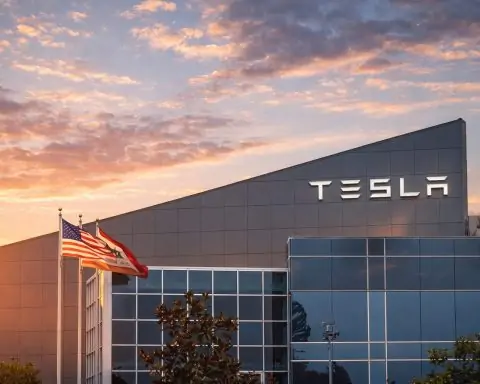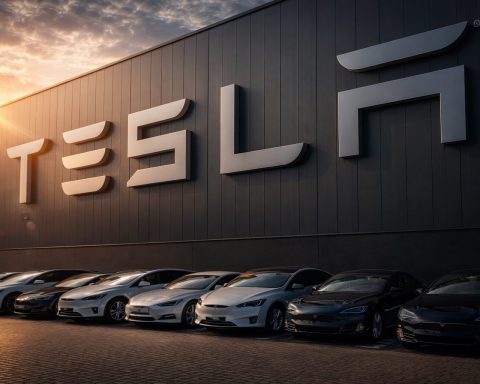NASA’s acting chief Sean Duffy has announced he will open the Artemis III lunar-lander contract to competition after SpaceX’s delays [1]. Competing firms like Jeff Bezos’s Blue Origin and a Lockheed Martin–led team are now eyeing the first crewed Moon mission, slated for 2028 to beat China’s 2030 lunar goal [2] [3]. SpaceX’s Starship has made progress (recent test flights met key objectives [4] [5]) but the program is still behind earlier schedules [6] [7]. On Oct 21, Elon Musk erupted on X (Twitter), calling Duffy “Sean Dummy,” questioning his space credentials (mocking the secretary’s past as a tree-climbing champion [8]) and accusing him of trying to “kill NASA” by folding it into the Transportation Dept [9] [10]. NASA’s press office quickly clarified Duffy was not angling to keep the NASA job – he only floated making the agency cabinet-level and says he’ll support whoever the President nominates [11] [12]. The space industry is abuzz: Rocket Lab (RKLB) stock is up roughly 150–170% in 2025 [13], Intuitive Machines (LUNR) jumped over 20% on new NASA awards [14], and analysts have hiked targets (Morgan Stanley recently set RKLB’s target to $68 [15]). Duffy emphasizes that “competition and innovation” are keys to beating China; Lockheed veteran Bob Behnken confirms teams have prepared multiple lunar-lander designs to “meet our country’s lunar objectives” [16] [17].
NASA’s Artemis Program and the Moon Race
NASA’s Artemis program aims to return astronauts to the lunar surface for the first time since Apollo 17 in 1972. The agency already flew the uncrewed Artemis I test in 2022 and is preparing Artemis II (a crewed fly-around) for early 2026 [18]. The final step – Artemis III – is planned to land humans near the Moon’s south pole. SpaceX won a $2.9 billion contract in 2021 to provide the Human Landing System (a crewed Starship variant) for Artemis III [19]. The original target was around 2025–26, but repeated delays (in Starship testing, spacesuit development and Orion capsule availability) have pushed the timeline to about 2028 [20] [21]. NASA has stated its goal is to achieve a crewed landing before the end of President Trump’s term in January 2029, partly to beat China’s ambitions of a 2030 landing [22] [23].
However, auditors and safety panels warn this schedule is “significantly challenged.” In September 2025 NASA’s Aerospace Safety Advisory Panel reported that Starship HLS is likely “years late” for a 2027 landing, and that “the next six months of Starship launches will be telling” about meeting the goal [24]. Former NASA official Paul Hill noted orbital refueling – crucial for lunar missions – still needs to be demonstrated. In short, NASA must balance urgency against technical readiness, and any further slip could jeopardize Artemis III’s timeline [25] [26].
Moon Lander Contract Thrown Open to Competitors
Faced with these delays, Acting Administrator Duffy announced on Oct. 20 that NASA will invite new bids for the Artemis III lander [27] [28]. In television interviews (Fox News and CNBC), Duffy said SpaceX’s Starship development has fallen behind schedule, threatening the goal of beating China to the Moon [29] [30]. “I love SpaceX… they’re behind. The president and I want to get to the moon in this president’s term, so I’m gonna open up the contract,” he told CNBC and Fox [31] [32]. Duffy explicitly named Blue Origin and other companies as potential competitors: “I think we’ll see companies like Blue get involved,” he said [33] [34].
The move marks a major shift in NASA’s approach. Blue Origin (Bezos’s company) had earlier protested NASA’s sole-source award to SpaceX and won a $3.4 billion contract to develop its Blue Moon lander for a later mission (Artemis V around 2029) [35]. Now Blue Origin will likely bid on Artemis III, as will Lockheed Martin and its industry team (Behnken confirms Lockheed has spent the year analyzing human landers and is ready to respond to NASA’s request) [36] [37]. NASA spokesman said SpaceX and Blue Origin may submit “acceleration approaches” by Oct. 29, and a broad Request for Information will be issued to the industry to propose faster lunar lander concepts [38] [39]. “Competition on the project” is the message, Duffy told Fox: “We’re going to have a space race in regard to American companies competing to see who can actually get us back to the moon first” [40].
Starship’s Progress and Future
Despite concerns, SpaceX has achieved key milestones. Its Starship Block 2 test flights in 2025 (Flight 10 on Aug. 26 and Flight 11 on Oct. 13) were declared successful. SpaceX reported that “every major objective was met” on Flight 10 – the booster performed its re-entry and landing burn, and the Starship upper stage deployed eight mass simulators to orbit, marking Starship’s first successful payload deployment [41]. Flight 11 repeated these goals: both stages reached space and splashed down as planned, eight dummy satellites were released, and Ship 38 reignited an engine to simulate orbital refueling tests [42] [43]. Acting NASA chief Duffy praised the Oct. 13 launch as “another major step toward landing Americans on the Moon’s south pole” [44], and SpaceX’s Gwynne Shotwell called this next-generation Starship “the vehicle that could take humans to the Moon and Mars” [45].
Block 2 Starship is now retired; SpaceX is preparing Version 3 (Block 3) with onboard refueling and other upgrades for crewed missions [46]. NASA remains committed to Starship for Artemis. But progress must accelerate: NASA now plans for Artemis III around 2028, and as a senior Space.com columnist noted, “multiple Starships” must dock as fuel depots before that date [47]. NASA auditors stress the timeline is under threat; one panel said Starship is likely years late for 2027, and that how Starship performs in the next six months will be critical [48]. If SpaceX can maintain “fast-paced testing” (as it resumed after Flight 10), NASA may stick with its plan. Otherwise, rivals could step in for Artemis III.
Musk vs. Duffy: Public Space Feud
The news of the reopened contract set off a fiery public exchange. On Oct. 21 Elon Musk launched a barrage of insults at Transportation Secretary (and Acting NASA boss) Sean Duffy on his X platform. Musk called Duffy “Sean Dummy,” taunted his background as a lumberjack speed-climber (“Should someone whose biggest claim to fame is climbing trees be running America’s space program?”) [49], and accused him of wanting to “kill NASA” by folding it into the Department of Transportation [50] [51]. These posts were in direct response to Duffy’s suggestion that SpaceX might lose exclusivity on the Moon-lander deal.
The spat is partly rooted in politics. Duffy was appointed by President Trump as NASA’s acting head after the Trump administration rescinded Musk’s preferred nominee, Jared Isaacman, earlier this year [52] [53]. (Isaacman – a longtime Musk ally and space-tourist – has been floated again for the role, and Musk has since praised him in other posts [54].) Musk’s attacks also reflect Trump-era disagreements: Duffy has lobbied to make NASA a Cabinet agency, which critics interpreted as a power grab [55]. NASA Press Secretary Bethany Stevens clarified that Duffy “never said he wants to keep the [NASA] job” and was merely suggesting that Cabinet status could benefit the agency [56] [57]. Duffy himself later downplayed the feud, saying he appreciates Musk’s passion and reiterating that open competition is needed “to win the race to the Moon” [58].
Market and Industry Impact
Investors have taken note of the widening “new space” race. Rocket Lab (NYSE: RKLB), often touted as a public alternative to SpaceX, has seen its share price skyrocket – up roughly 150–170% in 2025 [59] – on the expectation of rising launch demand. Morgan Stanley recently raised its price target on RKLB to $68 (from $20) [60]. Similarly, Intuitive Machines (NASDAQ: LUNR), a startup building robotic Moon-lander hardware, jumped over 20% in one day after announcing expanded NASA contracts [61]. Even traditional aerospace primes stand to benefit: Lockheed Martin, Boeing and Northrop Grumman, all builders of Orion or SLS components, are likely to see increased work if Artemis missions accelerate [62]. New space ventures have attracted bullish calls as well (for example, Orion-component supplier Karman Space & Defense, trading under KRMN, just IPO’d and has targets up to ~$100/share [63]).
Analysts note that NASA’s decision to allow competition is a double-edged sword: it could dilute SpaceX’s near-monopoly, but it also spurs innovation. As Duffy put it, “A little competition doesn’t hurt and it spurs innovation!” [64]. Many insiders agree. Bob Behnken of Lockheed Martin says his team has been quietly preparing human-lander designs all year and stands ready to “meet our country’s lunar objectives” as soon as NASA gives the go-ahead [65]. In short, Wall Street sees the Artemis program as a catalyst: one analyst recently wrote that a broader Moon race could “boost the space sector,” with winners ranging from small launch firms to legacy contractors [66] [67].
What’s Next for the Moon Race
NASA will likely make key decisions after the October 29 deadline. SpaceX and Blue Origin have been asked to submit expedited lunar-lander plans by then, and an industry-wide RFI is open for any innovative proposals [68] [69]. Meanwhile, SpaceX will continue Starship test flights (Block 3 pad upgrades are already under way) to prove it can meet the timeline. After Oct. 29, NASA may choose to keep SpaceX at the helm (perhaps with additional partners) if Starship shows rapid progress, or it may award the Artemis III lander to a combined bidder from industry.
Observers stress the coming months will be critical. As one space expert warned, “the next six months of Starship launches will be telling” in determining whether humans can really land on the Moon by 2027–2028 [70]. In the meantime, Duffy and Trump have made the goal clear: land astronauts on the Moon again – on time, and ahead of China [71] [72]. For now, the U.S. space program has reignited its own version of the space race, with multiple companies and a very public Musk–Duffy feud at center stage.
Sources: News reports from CNN/Newsource [73] [74], Reuters [75] [76], The Guardian [77], The Independent [78] [79], Space.com [80] [81] and industry analysis sites [82] [83]. These include statements by NASA officials, SpaceX/Blue Origin executives, and financial analysts on the current Artemis program. Stock performance data from Oct 2025 media and trading platforms. Predictions reflect ongoing expert commentary on NASA’s Artemis timeline and market responses.
References
1. ts2.tech, 2. ts2.tech, 3. www.reuters.com, 4. ts2.tech, 5. ts2.tech, 6. kesq.com, 7. ts2.tech, 8. kesq.com, 9. kesq.com, 10. www.theguardian.com, 11. kesq.com, 12. www.the-independent.com, 13. ts2.tech, 14. ts2.tech, 15. ts2.tech, 16. spacepolicyonline.com, 17. ts2.tech, 18. ts2.tech, 19. kesq.com, 20. www.space.com, 21. www.space.com, 22. ts2.tech, 23. www.space.com, 24. ts2.tech, 25. ts2.tech, 26. www.space.com, 27. ts2.tech, 28. spacepolicyonline.com, 29. www.reuters.com, 30. spacepolicyonline.com, 31. www.space.com, 32. www.reuters.com, 33. www.reuters.com, 34. ts2.tech, 35. ts2.tech, 36. spacepolicyonline.com, 37. ts2.tech, 38. spacepolicyonline.com, 39. spacepolicyonline.com, 40. ts2.tech, 41. ts2.tech, 42. ts2.tech, 43. ts2.tech, 44. ts2.tech, 45. ts2.tech, 46. ts2.tech, 47. ts2.tech, 48. ts2.tech, 49. kesq.com, 50. kesq.com, 51. www.theguardian.com, 52. kesq.com, 53. www.theguardian.com, 54. kesq.com, 55. www.theguardian.com, 56. kesq.com, 57. www.the-independent.com, 58. www.the-independent.com, 59. ts2.tech, 60. ts2.tech, 61. ts2.tech, 62. ts2.tech, 63. ts2.tech, 64. spacepolicyonline.com, 65. spacepolicyonline.com, 66. ts2.tech, 67. ts2.tech, 68. spacepolicyonline.com, 69. spacepolicyonline.com, 70. ts2.tech, 71. ts2.tech, 72. www.space.com, 73. kesq.com, 74. www.theguardian.com, 75. www.reuters.com, 76. www.reuters.com, 77. www.theguardian.com, 78. www.the-independent.com, 79. www.the-independent.com, 80. www.space.com, 81. www.space.com, 82. ts2.tech, 83. spacepolicyonline.com


